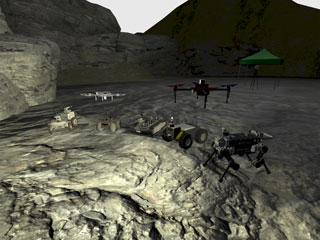Course Description
This course covers the mathematical foundations and state-of-the-art implementations of algorithms for vision-based navigation of autonomous vehicles (e.g., mobile robots, self-driving cars, drones). It provides students with a rigorous but pragmatic overview of differential geometry and optimization on manifolds and …
This course covers the mathematical foundations and state-of-the-art implementations of algorithms for vision-based navigation of autonomous vehicles (e.g., mobile robots, self-driving cars, drones). It provides students with a rigorous but pragmatic overview of differential geometry and optimization on manifolds and knowledge of the fundamentals of 2-view and multi-view geometric vision for real-time motion estimation, calibration, localization, and mapping. The theoretical foundations are complemented with hands-on labs based on state-of-the-art mini racecar and drone platforms. It culminates in a critical review of recent advances in the field and a team project aimed at advancing the state of the art.
Learning Resource Types
assignment
Programming Assignments
notes
Lecture Notes

Application of VNAV in DARPA’s Subterranean Challenge to map, navigate, and search complex underground environments, including human-made tunnels, urban underground, and natural cave systems. (Image courtesy of DARPA / public domain.)








